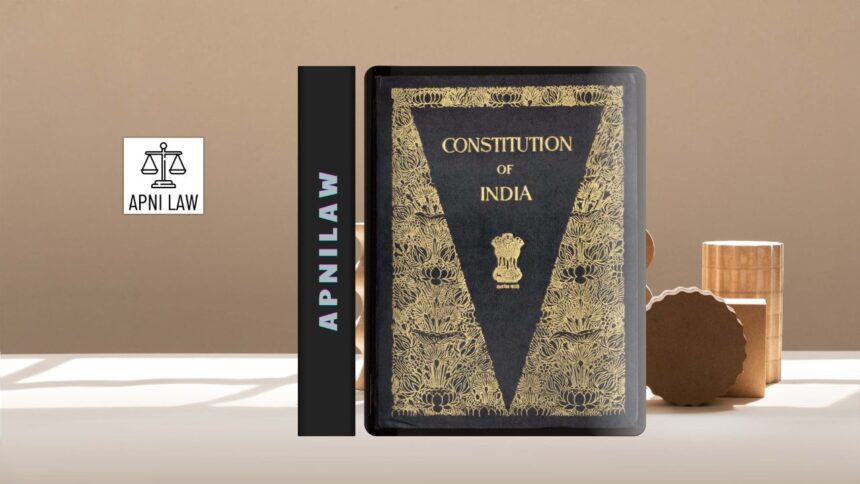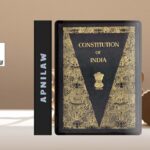Introduction
The story of India’s Constitution is often linked with the towering figure of Dr. B.R. Ambedkar, hailed as the Architect of the Indian Constitution. While his leadership of the Drafting Committee was crucial, it is equally important to recognize the role played by other founding fathers who worked tirelessly to lay the foundation of India’s democracy. Leaders like Jawaharlal Nehru, Sardar Vallabhbhai Patel, Dr. Rajendra Prasad, Maulana Abul Kalam Azad, and many others contributed to shaping the vision and structure of the Indian Republic.
Their speeches, ideas, negotiations, and compromises reflected the challenges of building a nation emerging from centuries of colonial rule and the trauma of Partition. They brought diverse perspectives to the Constituent Assembly, ensuring that the Constitution was not just a legal document but also a moral and political guide for generations. Understanding their role highlights how collective leadership, rather than the vision of a single individual, gave birth to modern India’s democratic framework.
Jawaharlal Nehru and His Visionary Role
Jawaharlal Nehru, India’s first Prime Minister, played a crucial part in defining the broad ideals of the Constitution. His famous Objectives Resolution, introduced on 13 December 1946 and adopted on 22 January 1947, laid down the guiding principles for the Constitution. The resolution spoke of justice, equality, freedom, sovereignty, and fraternity values that would later find their echo in the Preamble.
Nehru’s vision of India was rooted in democracy, secularism, and modernity. He saw the Constitution as a tool to transform Indian society into a just and progressive nation. His deep belief in parliamentary democracy guided the decision to adopt the British model of government, where the Council of Ministers remained collectively responsible to the legislature.
Nehru also influenced the Constitution’s emphasis on fundamental rights. He believed that political independence would be incomplete without social and economic freedom for citizens. His speeches during the Constituent Assembly debates emphasized the importance of ensuring equality before the law and protecting freedoms like speech, religion, and association.
Moreover, Nehru played a key role in balancing idealism with realism. While he advocated for socialist ideals, he also recognized the need for a flexible Constitution that could adapt to India’s complex social and economic challenges. His pragmatic approach ensured that the Constitution did not remain a utopian vision but became a workable document.
Sardar Vallabhbhai Patel and National Integration
Sardar Vallabhbhai Patel, remembered as the “Iron Man of India,” was instrumental in preserving the unity and integrity of the nation during its formative years. His greatest contribution lay in integrating over 560 princely states into the Indian Union. Without his political will and negotiation skills, the Constitution could never have represented a truly united India.
Patel also chaired the Advisory Committee on Fundamental Rights, Minorities, and Tribal and Excluded Areas. Under his leadership, the committee worked on balancing the rights of citizens with the unity of the nation. Patel firmly believed that while protecting minority rights was essential, national integrity could not be compromised.
His speeches in the Constituent Assembly reveal his belief in strong central authority. Patel argued that India needed a robust Centre to prevent fragmentation, especially after the painful experience of Partition. This perspective influenced the decision to give the Union significant powers over states in matters of national security, emergency, and integration.
Patel’s practical leadership style ensured that the Constitution struck a balance between safeguarding individual freedoms and maintaining a stable and united polity. His vision of a united India continues to inspire the idea of federalism with strength at the Centre.
Dr. Rajendra Prasad: Consensus Builder and First President
Dr. Rajendra Prasad, who served as the President of the Constituent Assembly, played the role of a moderator and consensus-builder. His calm temperament and ability to listen patiently helped maintain order in the Assembly, which often witnessed heated debates.
Prasad ensured that differing viewpoints on the role of religion, minority rights, or federal distribution of power were heard and respected. His leadership style encouraged cooperation, compromise, and unity, which were essential for drafting a Constitution acceptable to all communities.
As the first President of India after independence, Prasad also set important precedents in how the Constitution would function in practice. His speeches emphasized constitutional morality, discipline among public representatives, and the importance of adhering to democratic values.
Prasad’s contribution, therefore, was not only in steering the Constituent Assembly but also in setting the tone for how the Indian Constitution would be respected and followed in independent India.
Maulana Abul Kalam Azad: Voice of Secularism and Education
Maulana Abul Kalam Azad, a senior Congress leader and a scholar of repute, provided intellectual depth to the Constituent Assembly debates. He strongly argued for secularism, ensuring that the Indian Constitution kept religion separate from state functioning while guaranteeing freedom of conscience and worship.
Azad emphasized that India’s strength lay in its diversity and that no Constitution could succeed without protecting the cultural and religious rights of minorities. His vision helped shape provisions that assured every citizen equality irrespective of caste, creed, or religion.
Beyond secularism, Azad was a champion of education. His vision for universal education influenced later policies under the Directive Principles of State Policy. He believed that only through education could India achieve true equality and social progress.
Other Significant Contributors
While Nehru, Patel, Prasad, and Azad stood as central figures, many others also made invaluable contributions. K.M. Munshi, a member of the Drafting Committee, played a significant role in framing the Fundamental Rights and Directive Principles of State Policy. Alladi Krishnaswami Ayyar brought legal expertise that strengthened the technical aspects of the Constitution. T.T. Krishnamachari, who later became Finance Minister, also stepped in when members of the Drafting Committee resigned.
Leaders like H.C. Mookherjee worked tirelessly to secure minority rights and cultural freedoms. B.N. Rau, though not a member of the Assembly, served as the Constitutional Advisor and provided the first draft that guided the committee’s work. Each of these individuals added layers of thought and experience, making the Constitution a collective achievement rather than the product of one mind.
The Collective Spirit of Constitution-Making
What stands out in the work of the Constituent Assembly is the spirit of collaboration. Despite ideological differences, the founding fathers understood the urgency of creating a framework that could hold together a nation divided by language, caste, religion, and region.
Nehru’s idealism, Patel’s pragmatism, Prasad’s moderation, Azad’s secular vision, and Ambedkar’s legal brilliance together ensured that the Indian Constitution was both comprehensive and adaptable. Their combined efforts made it the world’s lengthiest Constitution but also one of the most functional.
FAQ
Why was Nehru’s Objectives Resolution important?
It laid down the guiding principles of justice, liberty, equality, and fraternity, which later shaped the Preamble and the overall philosophy of the Constitution.
How did Sardar Patel contribute to the Constitution?
He integrated princely states into the Indian Union and emphasized a strong Centre while protecting fundamental rights and national integrity.
What was Dr. Rajendra Prasad’s role in the Constituent Assembly?
As President of the Assembly, he built consensus, maintained order during debates, and ensured that all viewpoints were respected.
Why is Maulana Azad remembered in the context of the Constitution?
He championed secularism, minority rights, and the importance of education in building a democratic India.
Conclusion
The making of the Indian Constitution was not the work of a single leader but the outcome of collective vision and effort. Dr. Ambedkar’s role as the Architect remains unmatched, but leaders like Nehru, Patel, Prasad, Azad, and many others gave the Constitution its depth and inclusiveness. Each one brought their personal philosophy, whether it was Nehru’s democratic socialism, Patel’s focus on unity, Prasad’s moderation, or Azad’s secularism.
Together, they ensured that the Constitution became a living document capable of guiding India through its challenges and aspirations. Their legacy continues to remind us that democracy thrives on dialogue, compromise, and respect for diversity. The Constitution remains a testament to the collective spirit of India’s founding fathers, who built not just a legal framework but the soul of a new nation.
For any specific query call at +91 – 8569843472








